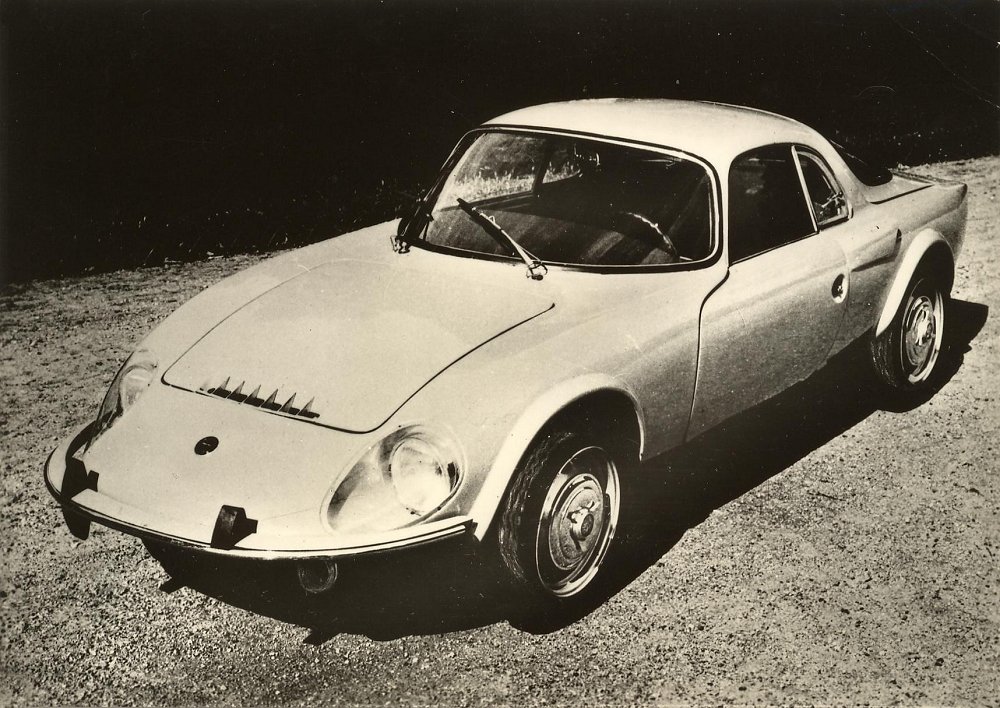Description
The Matra Jet 6 was the final and most powerful evolution of the original mid-engined René Bonnet/Matra Djet lineage. Introduced in 1966 and produced into early 1967, it represented the peak of Matra’s development of the world’s first series-production mid-engined sports car. With more power, improved refinement and better build quality than earlier versions, the Jet 6 took the Djet concept as far as it could go before Matra shifted direction with the later 530. Compact, aerodynamic and technically advanced, it remains one of the most characterful small GT cars of its era.
The Jet 6 used the same fundamental layout as the earlier Matra Djet 5 and 5S: a fibreglass body mounted on a tubular steel backbone chassis with the engine placed directly behind the cockpit. The backbone design, inspired by contemporary racing practice, kept weight low while maintaining good structural rigidity. With almost all mass concentrated between the axles, the Jet 6 had excellent balance and minimal polar inertia — qualities that gave it unusually modern handling compared with most small coupés of the mid-1960s.
Where the Jet 6 differed dramatically was in its power unit. Earlier Djets used Renault’s 1.1-litre engines, but the Jet 6 was fitted with the larger Renault “Sierra” 1,255 cc inline-four, similar to the unit found in the R8 Gordini. In Jet 6 tune, and with twin carburettors, the engine produced around 90 horsepower — a healthy figure in a car weighing a little over 650 kg. The result was lively performance: 0–100 km/h in around 10 seconds and a top speed of close to 190 km/h (118 mph). The broad torque band made the Jet 6 flexible in everyday driving, while the free-revving nature of the Gordini-based engine encouraged enthusiastic use of the gearbox.
The Jet 6 retained fully independent suspension all round. Up front, double wishbones with coil springs and dampers provided sharp turn-in and predictable grip. The rear used trailing arms with coil-spring units, offering good traction and stability even under hard cornering. The light weight and low centre of gravity made the Jet 6 feel agile and precise, with very little body roll and quick, accurate responses. Four-wheel disc brakes — extremely rare on a small sports car of this era — ensured strong, fade-resistant stopping power.
Visually, the Matra Jet 6 continued the distinctive aerodynamic shape established by Frank Costin’s original Djet design. Its long nose, low cabin and tapered rear section remained largely unchanged, though Matra refined panel fit and finish compared with the earlier René Bonnet cars. The fibreglass moulding was clean, compact and slippery, with a small frontal area and smooth airflow over the fastback tail. Cooling ducts around the rear quarters and the subtle roofline vents hinted at the mid-engine layout beneath the bodywork. The Jet 6 looked purposeful and sleek, more like a scaled-down racing prototype than a conventional road car.
Inside, the Jet 6 featured a focused, minimalist cockpit. The seating position was low and sporty, placing the driver close to the central backbone of the chassis. A full set of Jaeger instruments, simple toggle switches and functional upholstery created a purposeful driving environment. Matra improved comfort and finish compared with early Djet versions, but the Jet 6 remained a small, intimate sports coupé — practical enough for regular use, yet clearly built for drivers who valued engagement over luxury.
On the road, the Jet 6 impressed with its mid-engined precision. The steering was light and full of feel, offering excellent feedback, while the compact size and 650-kg kerb weight made it exceptionally nimble on twisting roads. Its stability at speed surprised contemporary journalists, who often compared its cornering behaviour to small GT race cars of the period. The combination of independent suspension, low weight and strong brakes made the Jet 6 feel much quicker than its engine capacity suggested.
Production remained limited, with only a small run of Jet 6 models built before Matra shifted its road-car programme toward the more broadly focused 530. This rarity, combined with its advanced engineering and motorsport-influenced layout, has made the Jet 6 one of the most sought-after Matra classics.
Today, the Matra Jet 6 is regarded as the ultimate expression of the original Djet concept — the most powerful, the most refined and the most complete version before the line ended. With its mid-engine balance, lightweight construction, distinctive styling and lively Gordini-derived performance, it stands as one of the most innovative small sports cars of the 1960s and an important milestone in France’s performance-car heritage.
